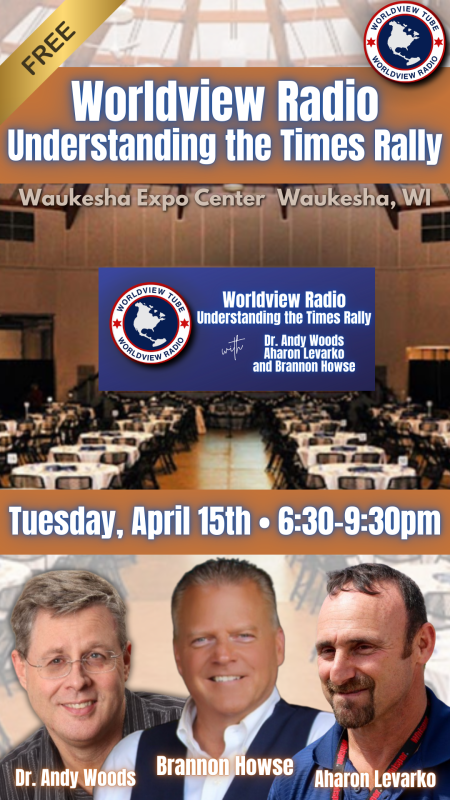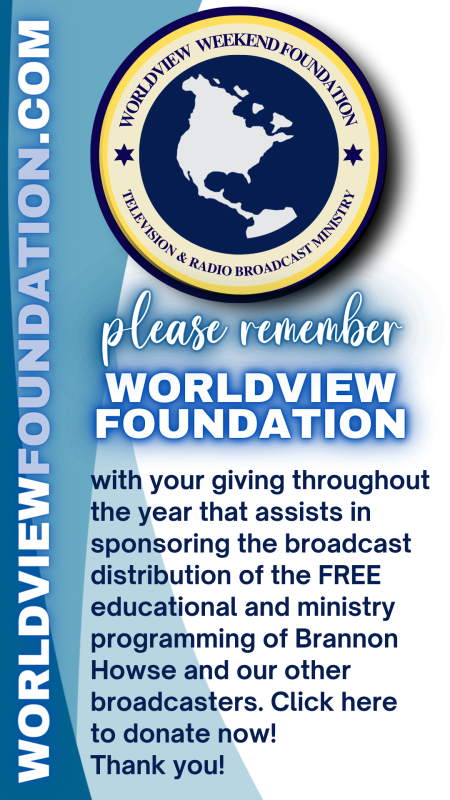On The Nuclear Brink In Ukraine
“America…goes not abroad, in search of monsters to destroy. She is the well-wisher to the freedom and independence of all.”—John Quincy Adams (July 4th, 1821)
Russian Nuclear “Saber Rattling”?
Washington and the world are holding their breath waiting to see if Russian dictator Vladimir Putin will use nuclear weapons to win his losing war in Ukraine.
Putin has threatened “lightning fast” nuclear strikes against NATO for supporting Ukraine: “If someone intends to interfere in what is going on from the outside they must know that constitutes an unacceptable strategic threat to Russia. They must know that our response to counterstrikes will be lightning fast. Fast.”[1]
Russian Foreign Minister Sergei Lavrov warns “a nuclear world war is now a real danger” because “the West is essentially fighting a proxy war against Moscow via its support for Kyiv.”[2]
Russian Foreign Ministry spokesperson Maria Zakhorova threatened: “Russia can strike military targets on the territory of those NATO countries that supply arms to the Kyiv regime…Afterall, this directly leads to deaths and bloodshed on Ukrainian territory.”[3]
Putin friend, Margarita Simonyan, chief of Russia’s media giant RT, said in a TV interview:
“Either we lose in Ukraine, or the Third World War starts. I think World War III is more realistic, knowing us, knowing our leader. The most incredible outcome, that all this will end with a nuclear strike, seems more probable to me than the other course of events.”[4]
U.S. Intelligence Community: Kingdom of the Blind
CIA Director, William Burns, agrees with Simonyan that Putin “doesn’t believe he can afford to lose” in Ukraine “because he staked so much on the choices that he made to launch this invasion.”
But according to Burns: “We don’t see, as an intelligence community, practical evidence at this point of Russia planning for the deployment or even potential use of tactical nuclear weapons. Given the kind of sabre-rattling that…we’ve heard from the Russian leadership, we can’t take lightly those possibilities.”[5]
However, given past and recent spectacular intelligence failures by CIA and the intelligence community in Afghanistan and Ukraine (such as predicting Ukraine would be defeated by Russia in 72 hours, such as failure to foresee stellar Ukrainian resistance and abysmal performance by the Russian Army) it could be fatal to trust the U.S. intelligence community is competent to provide warning of an impending Russian nuclear attack.
Indeed, Russia’s strategic nuclear forces are postured and their command-control-communications (C3) are designed to achieve surprise nuclear attack. Normally, Russian ICBMs and SLBMs are on Constant Combat Readiness, ready to receive orders over highly secure C3 channels and always ready to launch most of Russia’s strategic nuclear warheads in a few minutes, 24/7.[6]
CIA Director Burns is probably watching Russia’s 12th GUMO to move tactical nuclear warheads out of storage as “practical evidence…of Russia planning for the deployment or even potential use of tactical nuclear weapons.” But Russia already has tactical nuclear weapons deployed on cruisers and submarines that could be used for a surprise attack that would, again, blindside CIA Director Burns.
Director of National Intelligence, Avril Haines, and CIA Director Burns, are either lying or grossly incompetent to be giving false assurances to the American people that Moscow’s nuclear threats are mere “saber rattling” and the world is not on the brink of nuclear war:
--The intelligence community’s own worst case scenario toward nuclear war is actually happening: a major war in Europe involving the two nuclear superpowers, three including China;
--Vladimir Putin ordered Russia’s nuclear forces to go on “special combat alert” on February 27 and disappeared with his general staff into one of Russia’s hundreds of deep underground command posts that are impervious to nuclear attack;
--Reportedly, Russian elites and their families have been flying from Moscow to the Urals where are located some of the best protected deep underground complexes, including the Yamantau Mountain complex, a deep underground facility the size of a small city;
--Russian strategic and tactical nuclear forces have been conducting “exercises” that can further disguise an impending surprise nuclear attack, as the “exercise” of Russian conventional forces preceded invasion of Ukraine.
The U.S. intelligence community is probably institutionally and technically incapable of providing warning of an impending nuclear attack, and will be taken by surprise.[7]
Scenarios for Nuclear War
Opinion across the political spectrum, a consensus broad and deep, is that Russia may well resort to nuclear weapons.
Henry Kissinger compares the Ukraine War to the outbreak of World War I “which was not intended by any of the countries” but escalated out of control. If Russia uses nuclear weapons, “We can’t just accept it. It would open the world to a new world of blackmail.”[8]
According to Gordon Chang in “Russia and China: The Worst Moment In History Coming Soon”:
“Russia has a nuclear doctrine known as ‘escalate to deescalate’ or, more accurately, ‘escalate to win,’ which contemplates threatening or using nuclear weapons early in a conventional conflict.”
“It cannot be a good sign that Russia, China, and North Korea at the same time are threatening to launch the world’s most destructive weaponry.”
“Whatever the reason for the threats, Putin and Xi have told everyone what they plan to do. Unfortunately, Western leaders are determined not to believe them.”
“In response to Russian threats, President Joe Biden on February 28 said the American people should not worry about nuclear war. On the contrary, there is every reason to worry.”[9]
Academics Gregg Herken (University of California), Avner Cohen and George Moore (Middlebury Institute of International Studies at Monterey), warn that Putin might use nuclear weapons to stop western “interference” in Ukraine by performing an atmospheric nuclear test in the Arctic as a “warning shot” or by making an EMP attack on Ukraine or by making a tactical nuclear strike on Ukraine.[10]
Ambassador John Bolton, former White House National Security Advisor, is almost certainly correct that Putin is not crazy, not immediately in danger of being overthrown, and is probably receiving a wide range of opinions from Kremlin advisors on what to do to win the Ukraine War: “Even in autocratic regimes, there are always advisors more than happy to point out their rivals’ failures…Like America, Russia has multiple intelligence agencies that vie bureaucratically for influence.”[11]
The range of nuclear options under consideration in Moscow are probably much broader and more ambitious than those described by Herken, Cohen and Moore, each with its bureaucratic and ideological faction, including:
--EMP/Cyber War against European NATO to paralyze power projection capabilities in support of Ukraine, and warn the U.S. against “interference.” Russia’s “cyber-warriors” believe World War III can be won in the electromagnetic spectrum, rendering traditional instruments of warfare obsolete.[12]
--Surgical nuclear strikes to destroy U.S. tactical nuclear weapons bunkered in European NATO, in the belief that tactical nuclear strikes on Ukraine will inevitably escalate to tactical nuclear war with the U.S. and NATO. Traditionalists schooled in Soviet military thought, as are all Russian generals, will be leery that “de-escalation” can be achieved by one or a few nuclear “warning shots” and will be for preemptively winning the tactical nuclear war.[13]
--EMP/Cyber War against the U.S. and European NATO to win World War III without escalating to all-out nuclear war. The Biden Administration’s non-response to Russian cyber-attacks against Colonial Pipeline and many other critical infrastructures in 2021 will surely encourage some to advocate an all-out EMP/Cyber war to paralyze the U.S. homeland and Western Europe.
--All-out nuclear war in the belief that escalation is inevitable, and as a “final solution” to the problem of the U.S. and NATO. Marshal Sokolovskiy still has adherents who believe a disarming first strike by the Strategic Rocket Forces is the key to winning World War III.[14]
The faction that wins the Ukraine War for Vladimir Putin will enjoy the dictator’s gratitude for life and largess in future defense budgets. If Putin opts for none of the above, for a “30-100 years war” to conquer Ukraine, then the Kremlin’s circumstances are not as desperate as most in the West believe.
Losing World War III
“If Putin fires a nuclear warning shot in the Ukraine war,” Herken, Cohen and Moore advise, “President Joe Biden should resist pressure to respond in kind and avoid any options that could lead to an escalating nuclear exchange. Instead, the president should rally the nations of the world in a universal condemnation of Putin for breaking the nuclear taboo…The U.S. and NATO could also respond by use of non-kinetic means like cyber warfare.”[15]
Herken, Cohen and Moore’s advice amounts to a recommendation to surrender. If Moscow uses nuclear weapons, regardless of condemnation by the West, by breaking the so-called “nuclear taboo” and demonstrating unflinching political will to win at any cost, Russia will become the most feared nation in the world—and its master.
Russia may follow Machiavelli’s advice that, “It is much safer to be feared than loved.”
Every day that the U.S. and NATO follow a policy of “fighting to the death of the last brave Ukrainian” they highlight the great efficacy of nuclear blackmail—a victory for Russia that is more important than defeat of its conventional forces in Ukraine.
Yet Herken, Cohen and Moore are right to recommend avoiding nuclear escalation—because the West cannot win a nuclear war with Russia.
Deterrence Crisis: Limited Nuclear War
Chief of U.S. Strategic Command, Admiral Charles Richard, who also sits on the Nuclear Weapons Council in addition to commanding all U.S. nuclear forces, warns: “We are facing a crisis deterrence dynamic right now that we have seen only a few times in our nation’s history…The war in Ukraine and China’s nucleartrajectory—their strategic breakout—demonstrates that we have a deterrence and assurance gap based on the threat of limited nuclear employment.”[16]
The Defense Threat Reduction Agency’s Robert Peters, Chief of the Strategic Trends and Effects Department, concurs: “China and Russia are incentivized to escalate the level of violence above the conventional threshold, but below a general nuclear exchange—and should that happen, those states are postured to defeat us.”[17]
Peters assesses that limited nuclear use by Russia or China could strain U.S. alliance relationships beyond the breaking point—and Moscow and Beijing know this:
“The political effect of responding either with conventional weapons or with high-yield nuclear weapons would create serious alliance cohesion issues within any U.S.-led coalition…Some allies might demand a nuclear response (even one that was high-yield) to a low-yield nuclear attack, while others would almost certainly blanche at the prospect of a limited nuclear war…The political crisis would be severe, immediate, and perhaps devastating to coalition cohesion.”[18]
Moreover:
“This is a prospect our enemies count on and is part of the reason why a low-yield nuclear strike would nonetheless have strategic political impacts…And they are not problems which would confront China or Russia, non-democracies who do not have to worry about offending allies…”
“We must examine the strategic and operational and tactical warfighting challenges. And we must re-examine our force posture as well as our declaratory policy…If we do not, we will lose the war.”[19]
Deterrence Crisis: General Nuclear War
Russia is much better prepared than the U.S. not only for tactical nuclear war, employing low-yield nuclear weapons on the battlefields of Ukraine, but for an all-out general nuclear war, employing high-yield strategic warheads against the U.S. homeland:
--Russia has thousands of nuclear command posts, bunkers, and shelters for political-military elites and civilians, including nuclear blast doors on subways to protect urban populations.
--Russia has a very serious nuclear civil defense program that just a few years ago exercised sheltering 40 million people.
--Russia has some 10,000 ABM/SAMs dual capable for nuclear or conventional use for intercepting incoming ballistic missile warheads, cruise missiles, or bombers.
--Russia has by far the world’s biggest and most modern offensive nuclear arsenal, with at least a 10-to-1 advantage over the U.S. in tactical nuclear weapons, and perhaps a 2-to-1 advantage in strategic nuclear warheads. If Moscow is cheating on New START, which is likely, the number of operational strategic nuclear warheads could be about 1,500 U.S. versus 3,000 Russia.
In contrast, the United States has:
--No deep underground command posts for political-military leaders that would survive a nuclear strike. (Even NORAD’s famous command post inside Cheyenne Mountain, designed to survive the A-bomb, would probably not survive thermonuclear strike by H-bomb.)
--No significant nuclear civil defense program or system of shelters to protect the civilian population.
--No anti-missile defenses capable of stopping Russian (or Chinese) warheads, only 64 National Missile Defense Ground-Based Interceptors planned for less sophisticated missile threats from North Korea or Iran.
--No modern ICBMs, SLBMs, ballistic missile submarines, or strategic bombers, all of which are at least 30 years old and many nearing obsolescence.
--No modern nuclear warheads, all of which have been patched-up and repaired over the decades, none tested for 30 years.
--Almost no tactical nuclear weapons (about 100-180 antique gravity bombs bunkered in NATO Europe versus 2,000-8,000 modern battlefield nuclear weapons for Russia).[20]Washington War Fever Fantasies
Despite Russia’s vastly superior nuclear posture and capabilities, despite the virtual certainty that the U.S. would lose a limited or general nuclear war with Russia, a bipartisan Washington consensus is driving the U.S. ever more deeply into the Ukraine War to defeat Russia—regardless of nuclear risks.
Most of Washington’s genuinely best and brightest legitimately fear that even a Russian partial victory in Ukraine will lead to further aggression by Russia and China, unleashing World War III.
John Bolton envisions a 30-100 years war over Ukraine that would likely shatter NATO, but he would fight the war anyway:
“Despite incessant hosannas about Alliance unity, the West is already fraying…Remember, every day the war grinds on is further evidence of NATO’s fundamental, unalterable shame in failing to deter Russia in the first place…”
“If, however, Russia emerges from its current military debacle with anything even remotely smacking of victory, the reverberations in Europe and worldwide, especially in Beijing, will be enormous.”[21]
Major Shane Praiswater invokes the late great Herman Kahn’s book On Thermonuclear War, published 60 years ago, to argue that Kahn’s theory of “ladders of escalation” means the U.S. can be more aggressive in Ukraine, without Russia starting a nuclear war.[22]
Praiswater’s serious article exemplifies that, not only are U.S. nuclear capabilities antique, but so is U.S. nuclear theory and strategy. If Kahn were alive today, he would point out that the U.S. has not done the necessary rigorous analysis to know precisely where the “nuclear tripwires” are in Ukraine—or if such is even knowable.
Richard Kemp asks “Will NATO Fight?” and makes a persuasive case that Russian nuclear blackmail in Ukraine proves NATO will not fight, but calls for fighting a losing war with Russia anyway:
“If nuclear terror applies to Ukraine, why doesn’t it apply to any NATO country that becomes a target of Russian military aggression? Why would NATO leaders fear Putin’s nukes any less if he takes a bite out of Poland or the Baltic states? The reality is, if it is true that NATO could not risk intervention over Ukraine for fear of Russian nuclear retaliation, it could not risk intervention over, say, Latvia for the same reason.”
“Can we expect Europeans to fight and die for countries whose histories and modern sense of worth have been roundly denounced and condemned by their own leaders?...If somehow the political and popular will to defend NATO member states did materialize, what would European countries fight with? Constantly expanding social welfare programmes have driven the military out of the marketplace across the continent.”[23]
Nonetheless:
“While he remains in the Kremlin, Putin’s objective is the neutralization of NATO. He knows that the alliance’s failure to fight for its own under his provocation would spell its final humiliation and signal the end of the U.S.-led world order. For the liberty, prosperity and security of future generations, this cannot be allowed to happen.”[24]
Senator Lindsey Graham claims the U.S. can fight Russia in Ukraine without fear of nuclear escalation because—preposterously—Russian officers would disobey Putin’s orders to launch nuclear weapons, or shoot him.[25]
President Biden is more likely to encounter resistance to nuclear use from his own party and advisors than is Putin from the Russian military. Russia’s dictator regularly practices fighting nuclear wars, and has automated C3 systems guaranteeing positive control and execution of nuclear forces.
Indeed, Putin is more popular in Russia than President Biden is in the U.S. because Putin has convinced his people that the U.S. and NATO are waging a proxy war in Ukraine on Russia.[26]
Some analysts fantasize that U.S. intervention in Ukraine can be leveraged to achieve Russia’s total and unconditional surrender, including return of all Ukraine’s annexed territories, dismantlement of all Russia’s tactical nuclear weapons, and dethroning Putin—without nuclear war. Such dangerously unrealistic expectations are reason enough for the U.S. to seek an exit ramp from the Ukraine War.
Senator Graham calls for giving Russia “no off-ramp” from the Ukraine War—but Ukraine, the U.S., NATO and the world needs an exit, a peaceful settlement, to terminate the Ukraine War’s nuclear escalatory possibilities.[27]
Sweden and Finland wanting to join NATO, celebrated in the West as a sign of NATO’s strength, is more intelligently understood as an indicator of the proximity of nuclear war. Sweden and Finland would not abandon their long cherished neutrality—unless they take very seriously Russia’s nuclear threats.
Winning World War III
World War III may have already begun in Ukraine—but it is not the time or place where the West can win. This message is so unwelcome that even your patriotic author has been accused of “parroting Russian talking points”—when I am really trying to save the U.S. and NATO from nuclear destruction.
The U.S. needs time to match or surpass the modern nuclear capabilities of Russia and China, time to build conventional forces capable of deterring or defeating globally the New Axis that is Russia, China, North Korea and Iran. Time to find competent political-military leaders capable of winning.
Victory can best be achieved by constraining World War III into a New Cold War, by deterring aggression and keeping the peace, so in time our totalitarian adversaries, whose systems are based on lies, will be destroyed by their own internal contradictions, crushed under the burden of their own armaments—as was the USSR during the old Cold War: defeated peacefully.
Dr. Peter Vincent Pry is Executive Director of the Task Force on National and Homeland Security, served as Director of the U.S. Nuclear Strategy Forum, Chief of Staff of the Congressional EMP Commission, and on the staffs of the Congressional Strategic Posture Commission, the House Armed Services Committee, and the CIA. He is author of the books Will America Be Protected? (2022), Blackout Warfare (2021), and The Power And The Light (2020).
[1] “Vladimir Putin Warns He WILL Use Nukes Against West In ‘Lightning Fast’ Strike” UK Sun (27 April 2022).
[2] Ibid.
[3] Ibid.
[4] “Putin Would Prefer Nuclear Strike To Defeat In Ukraine, Says Russian State TV Chief” Yahoo News (28 April 2022).
[5] “CIA Chief: Putin ‘doesn’t believe he can afford to lose’ in Ukraine” AFP News Bureau (7 May 2022).
[6] See “The Nuclear Crisis Nobody Knows” EMPtaskforce.us (5 March 2022) and my report Surprise Attack: ICBMs and the Real Nuclear Threat EMPtaskforce.us (31 October 2020).
[7] See “The Nuclear 9/11 In Our Future” EMPtaskforce.us (12 March 2022).
[8] “Kissinger Warns Of Putin Using Nuclear Weapons In Ukraine” Newsmax (8 May 2022).
[9] Gordon Chang, “Russia and China: The Worst Moment In History Coming Soon” Gatestone (6 May 2022).
[10] Gregg Herken, Avner Cohen, George Moore, “3 Scenarios for How Putin Could Actually Use Nukes” Politico (16 May 2022).
[11] John Bolton, “Putin’s 30 or 100 Year War For Ukraine” 1945 (4 April 2022).
[12] Dr. Peter Vincent Pry, Blackout Warfare: Attacking the U.S. Electric Power Grid A Revolution In Military Affairs (EMP Task Force: 2021). EMP Commission, Nuclear EMP Attack Scenarios and Combined-Arms Cyber Warfare (July 2017) www.firstempcommission.org.
[13] See for example: A. A. Sidorenko, The Offensive (Moscow: 1970). Joseph D. Douglas Jr. The Soviet Theater Nuclear Offensive (U.S. Air Force and U.S. Defense Nuclear Agency
[14] Marshal V. D. Sokolovskiy, Military Strategy (Moscow: 1962) translated Harriet Fast Scott, Soviet Military Strategy (Stanford Research Institute: 1975). Mark Miller, Soviet Strategic Power and Doctrine (Advanced International Studies Institute: 1982). John Caravelli, “The Role of Surprise and Preemption in Soviet Military Strategy” International Security Review (Summer 1981).
[15] Gregg Herken, Avner Cohen, George Moore, “3 Scenarios for How Putin Could Actually Use Nukes” Politico (16 May 2022).
[16] “U.S. Nuclear Commander Warns Of Deterrence ‘Crisis’ Against Russia And China” Defense News (4 May 2022).
[17] Robert Peters “The Red Zone: Understanding an Escalatory Pathway” Air University Press (9 May 2022).
[18] Ibid.
[19] Ibid
[20] “How To Win The New Cold War In Ukraine” EMPtaskforce.us (29 March 2022).
[21] John Bolton, “Putin’s 30 or 100 Year War For Ukraine” 1945 (4 April 2022).
[22] Major Shane Praiswater, “How to Gauge the Risk of a Nuclear Escalation with Russia” Defense One (4 May 2022).
[23]Richard Kemp, “Will NATO Fight?” Gatestone (10 May 2022).
[24] Ibid.
[25] “Sen. Lindsey Graham to Newsmax: Give Them The Damn Jets!” Newsmax TV (24 May 2022).
[26] Putin’s Approval Ratings Soar Amid Russia’s War in Ukraine” New York Times (31 March 2022).
[27] Fox News Sunday (8 May 2022); “WATCH: Graham Says There Is No ‘Off-Ramp’ In War ‘Let’s Take Out Putin’” Washington Examiner (8 March 2022).
Trending Stories
WE'RE A 100% LISTENER SUPPORTED NETWORK
3 Simple Ways to Support WVW Foundation
Make Monthly Donations
-or-
A One-Time Donation
-
Mail In Your Donation
Worldview Weekend Foundation
PO BOX 1690
Collierville, TN, 38027 USA -
Donate by Phone
901-825-0652









































